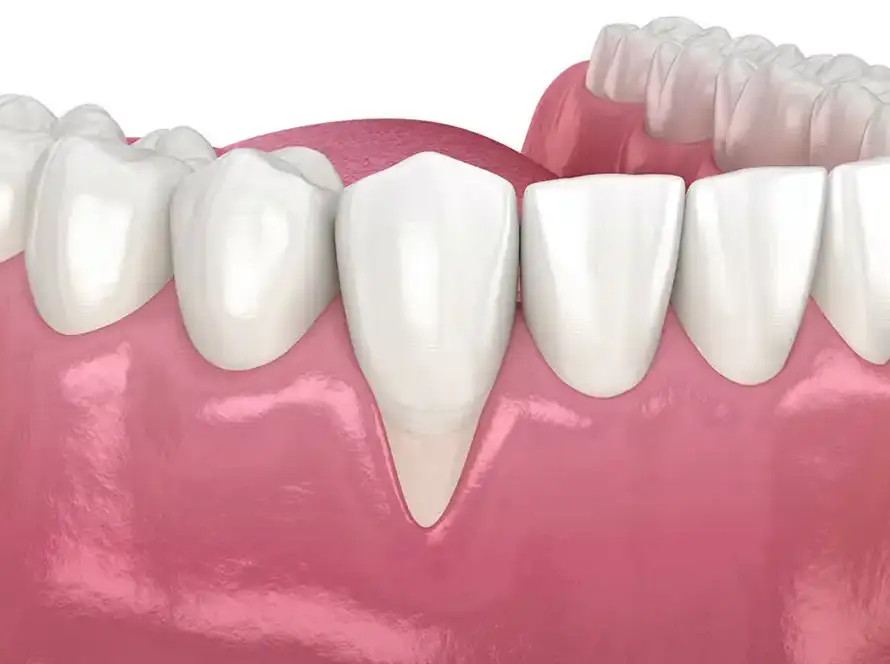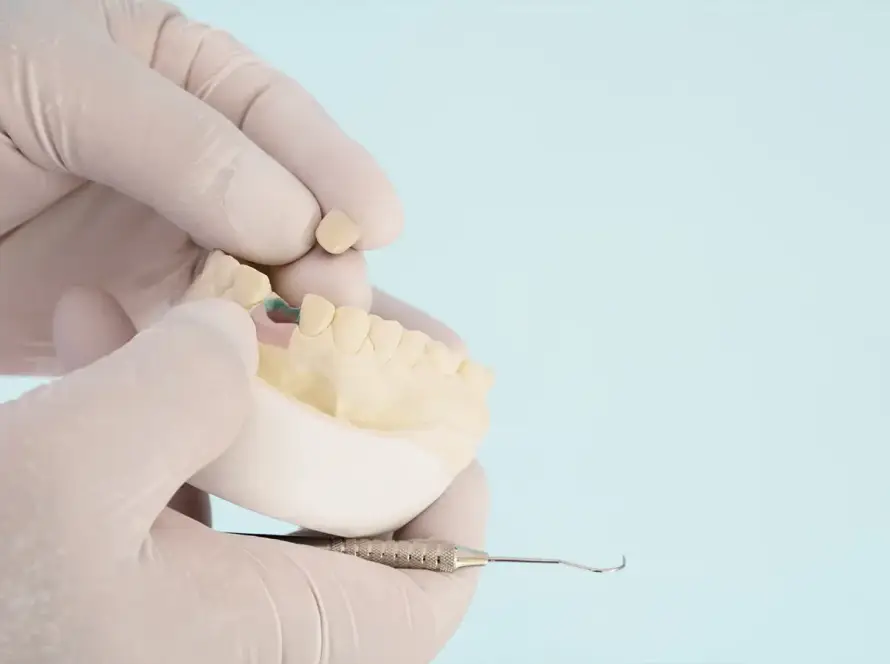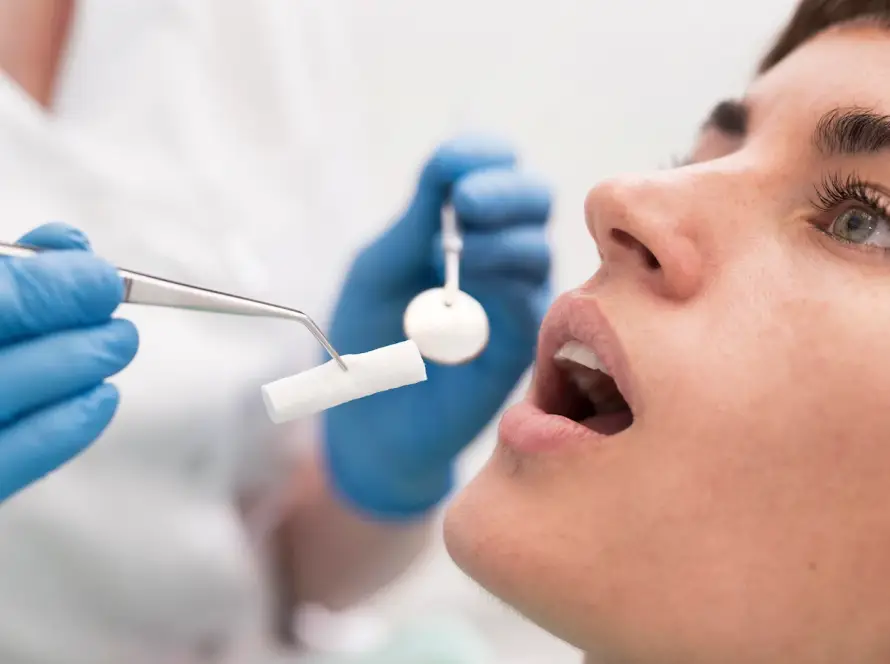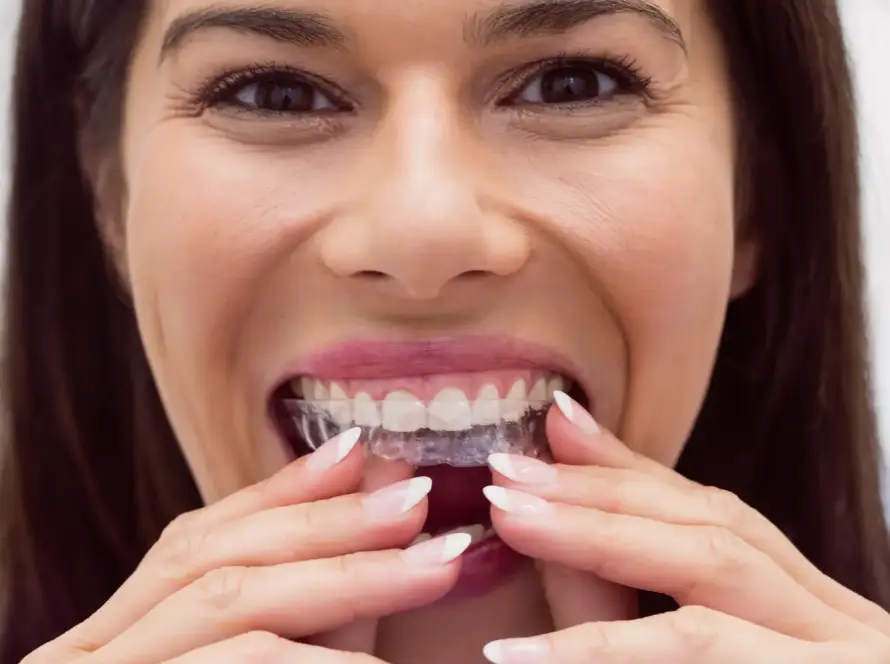Wisdom teeth, also known as the third molars, are the final set of teeth to emerge in the late teens or early twenties. However, due to their late arrival and limited space in the mouth, they often cause complications and require removal. Wisdom teeth removal is a common dental procedure performed by oral surgeons or dentists. It involves the extraction of these troublesome teeth to alleviate pain, prevent overcrowding, and prevent potential oral health issues.
During wisdom teeth removal, a local anesthetic or sedation is administered to ensure a comfortable experience for the patient. The surgeon then makes an incision in the gum tissue to access the tooth and extract it carefully. The length and complexity of the procedure may vary depending on the tooth’s position, size, and the presence of any complications.
After the extraction, it is essential to take proper care of the surgical area to promote healing and prevent complications such as infection or excessive bleeding. This typically involves the use of gauze to control bleeding immediately after the surgery.
To understand how long gauze should be used post surgery, it is important to consider individual variations and the extent of the extraction. Typically, gauze is used to apply gentle pressure on the extraction site to control bleeding. Dentists usually recommend biting down on the gauze pad for about 30 minutes after the surgery to allow blood clotting at the site. However, it is important to follow the specific instructions provided by the dentist or oral surgeon since each case is unique and may require different care protocols.
How Long to Use Gauze After Wisdom Teeth Removal?
After wisdom teeth removal, it is common for dentists to place gauze packs over the extraction sites to help control bleeding and promote healing. But how long should you keep the gauze in your mouth? The duration of gauze usage can vary depending on individual circumstances, but generally, it should be used for the first few hours following the procedure.
- Immediate post-surgery: Following the extraction of wisdom teeth, it is recommended to bite down gently on the gauze pads placed by your dentist. This helps to apply pressure to the extraction sites, aiding in blood clot formation and reducing bleeding. It is crucial to keep the initial gauze pads in place for at least 30 minutes to an hour to allow the clotting process to occur undisturbed.
- Replacing gauze: After the initial period of biting down on the gauze, it may be necessary to replace the gauze packs as instructed by your dentist. Generally, this may be required every 30 minutes or as needed to manage bleeding. Be sure to follow your dentist’s specific recommendations for gauze replacement.
- Reducing frequency: As time passes, the bleeding should gradually subside. After a few hours, it is common for bleeding to decrease or stop completely. At this point, the need for gauze use may decrease as well. This means you may only need to replace the gauze packs every few hours or not at all if bleeding has subsided significantly. It is crucial to follow your dentist’s instructions regarding gauze usage to ensure proper healing.
- Discontinuing use: Once the bleeding has significantly slowed down or stopped, it is generally safe to discontinue the use of gauze. However, it is essential to continue following your dentist’s advice regarding post operative care. This may include avoiding certain foods, practicing proper oral hygiene, and taking prescribed medications.
It is important to note that everyone’s situation is unique, and your dentist may provide you with specific instructions that differ from the general guidelines mentioned above. Following post operative care instructions diligently will help ensure a smooth recovery and promote optimal healing after wisdom teeth removal.
Always consult with your dentist or oral surgeon for personalized advice on how long to use gauze after wisdom teeth removal, as they will be familiar with the details of your specific case.
Post Operative Instructions: Wisdom Teeth Removal
After undergoing wisdom teeth removal, following post operative instructions diligently is paramount for a smooth recovery. To minimize discomfort and promote healing, adhere to prescribed pain medications and antibiotics as directed by your oral surgeon. Avoid strenuous activities, and refrain from touching the surgical sites with your tongue or fingers. Apply ice packs intermittently during the initial 24 hours to reduce swelling. Adopt a soft food diet, incorporating items like yogurt, mashed potatoes, and smoothies, while steering clear of crunchy or hot foods. Gently rinse your mouth with a saltwater solution and maintain impeccable oral hygiene without disturbing the extraction sites. Attend follow up appointments as scheduled, and promptly communicate any concerns to your oral surgeon. Consistent adherence to these instructions ensures a successful recovery and reduces the risk of complications.
The Importance of Using Gauze After Wisdom Teeth Removal
Using gauze after wisdom teeth removal is an essential step in the healing process. It helps control bleeding and promotes optimal healing. Here are some reasons why it is crucial to use gauze after wisdom teeth removal:
1. Control Bleeding
Gauze plays a vital role in controlling bleeding after wisdom teeth extraction. The extraction site will initially bleed and form a blood clot. Placing a clean gauze pad over the extraction site and gently biting down on it helps apply pressure, which aids in stopping the bleeding. This necessary step prevents excessive bleeding and allows blood clot formation.
2. Protect the Extraction Site
The gauze acts as a barrier between the extraction site and any external factors. It protects the wound from irritants, such as food particles, saliva, and bacteria, which may hinder the healing process and increase the risk of infection. By covering the site with gauze, you minimize the chance of contamination and provide a clean environment for healing.
3. Absorb Excess Saliva
During the healing process, your mouth might produce excess saliva. Gauze helps absorb this excess saliva, preventing it from accumulating around the wound. Reducing the amount of saliva around the extraction site enhances the healing process and promotes a more comfortable recovery.
4. Aid in Blood Clot Formation
The primary goal after wisdom teeth removal is the formation of a blood clot at the extraction site. This blood clot acts as a protective barrier and facilitates the healing process. By using gauze, you apply pressure to the site, which aids in the formation and stability of the blood clot. Protecting the blood clot is crucial to avoid complications such as dry sockets.
5. Promote Healing and Relieve Discomfort
Gauze application aids in the healing process by providing support to the extraction site. It helps to minimize post operative bleeding, reduce swelling, and relieve discomfort. By keeping the area clean and protected, gauze contributes to a smoother recovery and faster healing time.
In summary, using gauze after wisdom teeth removal is an essential step in the recovery process. It controls bleeding, protects the extraction site, absorbs excess saliva, aids in blood clot formation, and promotes healing. Following your dentist’s instructions on gauze usage is crucial for a successful and comfortable recovery.
What to Do If Bleeding Persists
If bleeding continues after wisdom teeth removal, it is essential to take the appropriate steps to address the issue. Here are some actions you can take if bleeding persists:
- Apply gentle pressure: Start by placing clean gauze or a moist tea bag over the extraction site. Bite down gently but firmly for about 20 to 30 minutes. This pressure can help promote clotting and reduce bleeding.
- Avoid spitting or rinsing: Avoid activities that may dislodge the blood clot forming in the extraction site, such as spitting or rinsing forcefully. This can restart or worsen bleeding. Instead, let saliva or blood gently flow out of the mouth.
- Elevate your head: When lying down, elevate your head with pillows to reduce blood flow to the extraction site. This can help minimize bleeding.
- Avoid strenuous activities: Engaging in physically demanding activities can increase blood flow and prolong bleeding. Take it easy and avoid activities like heavy lifting or intense exercise for at least 24 to 48 hours after the procedure.
- Apply a cold compress: If bleeding persists, a cold compress can help constrict blood vessels and reduce bleeding. Wrap an ice pack or a bag of frozen vegetables in a clean cloth and gently apply it to the outside of the affected area for about 15 minutes at a time. Remember to take short breaks between applications.
- Contact your dentist: If bleeding continues for an extended period or is excessive, it is crucial to contact your dentist or oral surgeon. They can evaluate your situation and provide further guidance.
Remember, some bleeding after wisdom teeth removal is normal, especially within the first 24 hours. However, if bleeding persists beyond this timeframe, or if you are concerned about the amount of blood loss, it is essential to seek professional advice. Your dentist or oral surgeon will be able to provide appropriate recommendations to address the issue and support your recovery process.
Alternatives to Gauze for Managing Bleeding
When it comes to managing bleeding after wisdom teeth removal, gauze is commonly used. However, there are also alternative options that can effectively help control bleeding and promote healing. Here are some alternatives to gauze for managing bleeding:
- Tea bags: Black or green tea bags contain tannins, which can help constrict blood vessels and reduce bleeding. Wet a tea bag with cold water and place it over the extraction site. Bite down gently to apply pressure and hold it in place for about 20 minutes. The tea bags also have anti inflammatory properties that can assist in soothing the area.
- Cold compress: Applying a cold compress to the outside of the mouth can help constrict blood vessels, reduce swelling, and minimize bleeding. Wrap an ice pack or a bag of frozen peas in a cloth and apply it to the affected area for 10-15 minutes at a time. Make sure to take breaks between applications.
- Saltwater rinse: Rinse your mouth gently with warm saltwater several times a day. This solution can help cleanse the wound and promote healing. Mix half a teaspoon of salt in a glass of warm water and swish it around your mouth without vigorously spitting or rinsing.
- Herbal remedies: Some herbs, such as sage or calendula, have natural astringent properties that can assist in reducing bleeding. Brew a strong cup of herbal tea using these herbs and let it cool. Swish the tea in your mouth for a minute or two and then spit it out. Repeat this process a few times a day to help control bleeding.
- Compression: Using a clean finger or a clean piece of gauze, apply gentle pressure to the extraction site to promote clot formation and control bleeding. Be cautious not to disturb the blood clot that forms during the healing process.
It is important to consult with your dentist or oral surgeon before trying any alternative methods to manage bleeding after wisdom teeth removal. They can provide guidance based on your specific situation and ensure that these alternatives are appropriate for you.
Remember, managing bleeding is crucial for proper healing after wisdom teeth extraction. Using these alternative methods along with following post operative instructions can help promote a smooth recovery process.
The Role of Proper Oral Hygiene in Recovery
Ensuring a smooth recovery after wisdom teeth removal is crucial, and proper oral hygiene plays a pivotal role in this process. Following the extraction, it’s essential to maintain a diligent routine to promote healing and prevent complications. Gently rinse your mouth with a prescribed or salt water solution to keep the surgical area clean, avoiding vigorous swishing. Be cautious while brushing, opting for a soft bristled toothbrush to gently clean surrounding teeth. Implementing good oral hygiene practices not only minimizes the risk of infection but also accelerates the overall healing process. Remember to adhere to post operative guidelines provided by your oral surgeon for a swift and complication free recovery.






